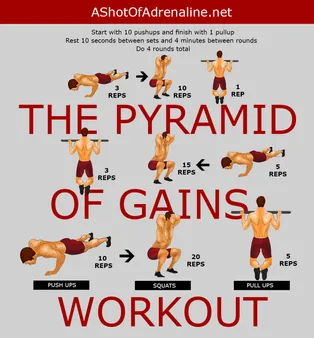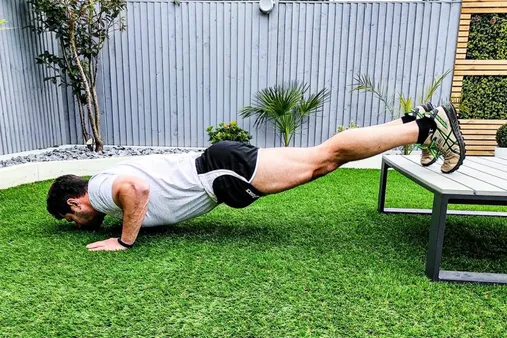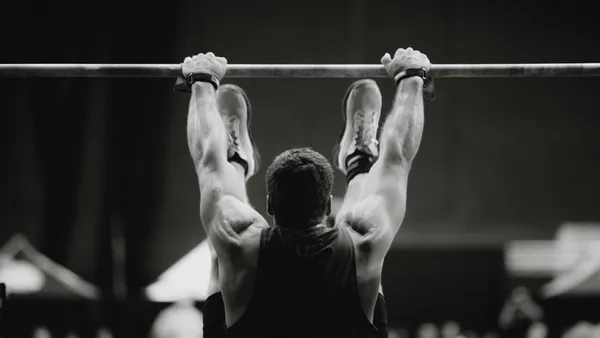Table of Contents
You're ready to investigate into the world of calisthenics, but you're wondering: How long should you spend on these awesome bodyweight workouts? It's a great question, and one that's important to answer if you want to see results and avoid injuries. This article will guide you through the perfect amount of calisthenics time for beginners, explore different workout routines, and help you track your progress on your fitness progression. So, let's get started! Ready to free your inner athlete? Let's jump in!
Calisthenics Duration | Beginner | Intermediate | Advanced |
|---|---|---|---|
Workout Frequency | 3-4 days/week | 4-5 days/week | 5-6 days/week |
Workout Length | 30-45 minutes | 45-60 minutes | 60-90 minutes |
Rest Time | 30-60 seconds between sets | 20-40 seconds between sets | 10-30 seconds between sets |
Progression | Focus on mastering basic exercises | Increase reps, sets, and difficulty | Incorporate advanced techniques and compound movements |
Calisthenics Time: How Long Should You Train?
Getting Started with Calisthenics: How Long Should I Do It?
Hey there, fellow fitness enthusiasts! Are you ready to explore into the world of calisthenics? I'm excited to share my passion for this amazing form of exercise with you. As a beginner, one of the most common questions you might have is: how long should I do calisthenics? Well, let's get started and find out!
First things first, it's essential to understand that calisthenics is a form of exercise that uses your body weight as resistance. It's a great way to build strength, improve flexibility, and boost your overall fitness. Now, when it comes to how long you should do calisthenics, the answer is: it depends on your fitness level and goals.
If you're just starting out, it's recommended to begin with shorter sessions (20-30 minutes) and gradually increase the duration as you get more comfortable with the exercises and build your endurance. For example, you can start with a 20-minute workout, three times a week, and gradually increase the duration to 30-40 minutes as you progress.
Here's a rough outline of what your calisthenics workout routine might look like:
Workout Frequency | Beginner | Intermediate | Advanced |
|---|---|---|---|
Workout Length | 20-30 minutes | 30-40 minutes | 40-60 minutes |
Rest Time | 30-60 seconds between sets | 20-40 seconds between sets | 10-30 seconds between sets |
Remember, consistency is key. It's better to start with shorter sessions and gradually increase the duration than to try to do too much too soon and risk injury. Also, don't forget to listen to your body and rest when needed.
Now, let's talk about some of the benefits of calisthenics. Not only can it help you build strength and improve your overall fitness, but it's also a great way to improve your flexibility and coordination. Plus, it's a low-cost and convenient form of exercise that you can do anywhere, anytime.
For example, did you know that Arnold Schwarzenegger, the famous bodybuilder and actor, used to do calisthenics as part of his workout routine? In fact, he's a big fan of calisthenics and has even written about its benefits in his book "The New Encyclopedia of Modern Bodybuilding". Check out our article on Did Arnold Schwarzenegger Do Calisthenics? to learn more.
Another great thing about calisthenics is that it's a form of exercise that can be adapted to suit different fitness levels. Whether you're a beginner or an advanced athlete, there are plenty of exercises and routines that you can do to challenge yourself and achieve your fitness goals.
For example, if you're just starting out, you can start with simple exercises like push-ups, squats, and lunges. As you get more comfortable, you can progress to more advanced exercises like pull-ups, dips, and burpees.
Here are some tips to help you get started with calisthenics:
- Start with short sessions and gradually increase the duration as you get more comfortable with the exercises.
- Focus on proper form and technique to avoid injury.
- Listen to your body and rest when needed.
- Find a workout buddy or join a calisthenics community to stay motivated and accountable.
Remember, the key to success with calisthenics is consistency and patience. Don't be discouraged if you don't see results right away. Stick with it, and you'll be on your way to achieving your fitness goals in no time.
Getting Started with Calisthenics: How Long Should I Do It?
How Long Should I Do Calisthenics for Optimal Results?
So, you're ready to investigate into the world of calisthenics, but you're wondering: How long should you spend on these awesome bodyweight workouts? It's a great question, and one that's important to answer if you want to see results and avoid injuries. It's like asking, "How long should I practice piano to become a concert pianist?" You wouldn't expect to become a musical genius overnight, right? The same goes for calisthenics. It takes time, effort, and consistency. It's about building a solid foundation, not rushing to the finish line.
I'm a firm believer in starting slow and steady. Think of it like building a muscle: you wouldn't lift the heaviest weight right away, would you? No way! You gotta ease in, work your way up, and let your body adapt. The same applies to calisthenics. Start with shorter sessions, maybe 20-30 minutes, and gradually increase the duration as you get more comfortable with the exercises and build your endurance. It's all about finding a rhythm that works for you.
Workout Frequency | Beginner | Intermediate | Advanced |
|---|---|---|---|
Workout Length | 20-30 minutes | 30-40 minutes | 40-60 minutes |
Rest Time | 30-60 seconds between sets | 20-40 seconds between sets | 10-30 seconds between sets |
Remember, consistency is key. It's better to start with shorter sessions and gradually increase the duration than to try to do too much too soon and risk injury. Also, don't forget to listen to your body and rest when needed. And hey, don't be afraid to take breaks! Your body needs time to recover and rebuild. Think of it like a marathon, not a sprint. You're in it for the long haul, so pace yourself.
Now, let's talk about some of the benefits of calisthenics. Not only can it help you build strength and improve your overall fitness, but it's also a great way to improve your flexibility and coordination. Plus, it's a low-cost and convenient form of exercise that you can do anywhere, anytime. No need for fancy gyms or expensive equipment. Just you, your body, and a little bit of space. It's like having your own personal gym in your pocket. Pretty cool, right?
For example, did you know that Arnold Schwarzenegger, the famous bodybuilder and actor, used to do calisthenics as part of his workout routine? In fact, he's a big fan of calisthenics and has even written about its benefits in his book "The New Encyclopedia of Modern Bodybuilding". Check out our article on Did Arnold Schwarzenegger Do Calisthenics? to learn more.
Another great thing about calisthenics is that it's a form of exercise that can be adapted to suit different fitness levels. Whether you're a beginner or an advanced athlete, there are plenty of exercises and routines that you can do to challenge yourself and achieve your fitness goals. It's like having a toolbox filled with tools for every skill level. You can choose the right tools for the job, and as you get stronger, you can upgrade to more challenging tools. It's all about continuous improvement.
For example, if you're just starting out, you can start with simple exercises like push-ups, squats, and lunges. As you get more comfortable, you can progress to more advanced exercises like pull-ups, dips, and burpees. It's like learning a new language: you start with the basics and gradually build your vocabulary and fluency. The more you practice, the better you'll get.
- Start with short sessions and gradually increase the duration as you get more comfortable with the exercises.
- Focus on proper form and technique to avoid injury.
- Listen to your body and rest when needed.
- Find a workout buddy or join a calisthenics community to stay motivated and accountable.
Remember, the key to success with calisthenics is consistency and patience. Don't be discouraged if you don't see results right away. Stick with it, and you'll be on your way to achieving your fitness goals in no time. It's like planting a seed: you gotta nurture it, give it time to grow, and eventually, you'll see a beautiful flower bloom. So, be patient, stay consistent, and keep moving forward. You've got this!
Building a Calisthenics Routine: Tips for Beginners
Building a calisthenics routine is like crafting a delicious recipe: you need the right ingredients and the right steps to create something amazing! It's all about finding the perfect balance of exercises, sets, reps, and rest, and it's different for everyone. There's no one-size-fits-all approach, so you gotta experiment and find what works best for you.
Think of your body as a machine: you need to warm it up before you start working it hard. A good warm-up helps to prepare your muscles and joints for the workout ahead, reducing your risk of injury. It's like prepping your engine before you take your car for a spin. You wouldn't just jump in and start driving, would you? You need to give it a little time to warm up and get ready to go.
Here are some examples of simple warm-up exercises that you can do before your calisthenics workout:
- Light cardio, like jogging in place or jumping jacks
- Dynamic stretching, like arm circles, leg swings, and torso twists
- Light bodyweight exercises, like squats, lunges, and push-ups.
Once you've warmed up, it's time to start your workout. You can choose from a variety of exercises, depending on your fitness level and goals. Here's a basic routine you can try:
Remember, it's crucial to focus on proper form and technique to avoid injury. If you're not sure how to do an exercise correctly, there are plenty of resources available online and in fitness books. And hey, don't be afraid to ask for help! There are tons of calisthenics communities and trainers out there who are more than happy to guide you on your fitness process. It's like having a team of experts in your corner, ready to cheer you on and offer support.
Now, let's talk about rest. Just like you need to refuel your car after a long drive, you need to give your body time to recover after a workout. Rest is essential for muscle growth and repair, and it helps to prevent overtraining and injury. It's like giving your body a chance to recharge its batteries. You wouldn't expect your phone to work forever without a recharge, would you?
Here are some tips for getting enough rest after a calisthenics workout:
- Listen to your body and take breaks when you need them.
- Get at least 7-8 hours of sleep each night.
- Eat a healthy diet and stay hydrated.
- Avoid strenuous activity on your rest days.
And hey, don't forget to have fun! Calisthenics is a great way to get fit and feel good. So, enjoy the process, celebrate your progress, and keep pushing yourself to achieve your fitness goals. You're on your way to becoming a calisthenics rockstar! Now go out there and conquer those exercises!
Mastering the Basics: How Long Should I Practice Calisthenics Exercises?
Mastering the basics in calisthenics is like learning the alphabet: once you know the fundamentals, you can create endless words and sentences. It's about building a solid foundation that you can use to progress to more challenging exercises. It's like learning to walk before you can run. You gotta master the basics before you can take on the advanced stuff.
Here are some of the basic calisthenics exercises that you should focus on mastering:
- Push-ups
- Squats
- Lunges
- Plank
- Pull-ups (if you can)
Now, how long should you practice each exercise? Well, it depends on your fitness level and goals. For beginners, I recommend starting with 2-3 sets of 8-12 reps for each exercise. As you get stronger, you can increase the number of sets and reps. It's like building a house: you start with a solid foundation, then you add more layers and floors as you go along.
Here's a table showing the recommended number of sets and reps for each exercise based on your fitness level:
Exercise | Beginner | Intermediate | Advanced |
|---|---|---|---|
Push-ups | 2 sets of 8-12 reps | 3 sets of 10-15 reps | 4 sets of 12-18 reps |
Squats | 2 sets of 8-12 reps | 3 sets of 10-15 reps | 4 sets of 12-18 reps |
Lunges | 2 sets of 8-12 reps per leg | 3 sets of 10-15 reps per leg | 4 sets of 12-18 reps per leg |
Plank | Hold for 30-60 seconds | Hold for 60-90 seconds | Hold for 90-120 seconds |
Pull-ups | As many as you can | 3 sets of 5-8 reps | 4 sets of 8-12 reps |
Remember, it's important to listen to your body and rest when you need to. Don't push yourself too hard, especially when you're first starting out. It's like learning to ride a bike: you gotta start slow and gradually increase your speed as you gain confidence. And hey, don't be afraid to ask for help! There are tons of resources available online and in fitness books that can help you master the basics of calisthenics.
Once you've mastered the basic exercises, you can start adding more challenging variations. It's like learning a new dance move: you start with the basic steps, then you add more complex moves as you get more comfortable. This will help you to continue to progress and build strength and endurance. You'll be amazed at how far you can come with a little bit of practice and dedication. Remember, the process of a thousand miles begins with a single step.
How Long Should I Do Calisthenics for Optimal Results?
Building a Calisthenics Routine: Tips for Beginners
Warm-Up: It's Like Getting Your Engine Ready
You wouldn't just jump into your car and start driving, would you? You need to warm up your engine first. The same goes for your body. A good warm-up helps to get your blood flowing, loosen your muscles, and prepare your body for a workout. It's like getting ready for a big race, you wouldn't just jump into the race without stretching and getting your muscles ready, right?
Here are some simple warm-up exercises you can do before your calisthenics workout:
- Light cardio, like jogging in place or jumping jacks
- Dynamic stretching, like arm circles, leg swings, and torso twists
- Light bodyweight exercises, like squats, lunges, and push-ups
Workout: Time to Get Down to Business
Once you've warmed up, it's time to start your workout. You can choose from a variety of exercises, depending on your fitness level and goals. I always recommend starting with the basics, like push-ups, squats, and lunges. They're like the building blocks of calisthenics, and once you've mastered them, you can move on to more challenging exercises. Think of it like learning to ride a bike: you start with training wheels, and then you take them off when you're ready. You'll be amazed at how much stronger you get with just a little bit of practice.
Here's a basic routine you can try:
Remember, it's crucial to focus on proper form and technique to avoid injury. If you're not sure how to do an exercise correctly, there are plenty of resources available online and in fitness books. And hey, don't be afraid to ask for help! There are tons of calisthenics communities and trainers out there who are more than happy to guide you on your fitness process. It's like having a team of experts in your corner, ready to cheer you on and offer support.
Now, let's talk about rest. Just like you need to refuel your car after a long drive, you need to give your body time to recover after a workout. Rest is essential for muscle growth and repair, and it helps to prevent overtraining and injury. It's like giving your body a chance to recharge its batteries. You wouldn't expect your phone to work forever without a recharge, would you?
Here are some tips for getting enough rest after a calisthenics workout:
- Listen to your body and take breaks when you need them.
- Get at least 7-8 hours of sleep each night.
- Eat a healthy diet and stay hydrated.
- Avoid strenuous activity on your rest days.
And hey, don't forget to have fun! Calisthenics is a great way to get fit and feel good. So, enjoy the process, celebrate your progress, and keep pushing yourself to achieve your fitness goals. You're on your way to becoming a calisthenics rockstar! Now go out there and conquer those exercises!
Building a Calisthenics Routine: Tips for Beginners
Mastering the Basics: How Long Should I Practice Calisthenics Exercises?
The Foundations of Strength
Mastering the basics of calisthenics is like learning the alphabet, once you know the fundamentals, you can create endless words and sentences. It's about building a solid foundation that you can use to progress to more challenging exercises. It's like learning to walk before you can run. You gotta master the basics before you can take on the advanced stuff.
Think of it like this: imagine you're building a house. You can't just start building the roof without a solid foundation, right? You need to start with the basics, like the foundation, walls, and floors. Then, you can add on the more complex parts, like the roof, windows, and doors. Calisthenics is the same way. You need to master the basic exercises before you can move on to the more advanced ones. It's all about building a strong foundation so you can conquer those more difficult moves later on.
Practice Makes Perfect
Now, how long should you practice each exercise? Well, it depends on your fitness level and goals. For beginners, I recommend starting with 2-3 sets of 8-12 reps for each exercise. As you get stronger, you can increase the number of sets and reps. It's like building a house: you start with a solid foundation, then you add more layers and floors as you go along.
Remember, it's important to listen to your body and rest when you need to. Don't push yourself too hard, especially when you're first starting out. It's like learning to ride a bike: you gotta start slow and gradually increase your speed as you gain confidence. And hey, don't be afraid to ask for help! There are tons of resources available online and in fitness books that can help you master the basics of calisthenics.
Once you've mastered the basic exercises, you can start adding more challenging variations. It's like learning a new dance move: you start with the basic steps, then you add more complex moves as you get more comfortable. This will help you to continue to progress and build strength and endurance. You'll be amazed at how far you can come with a little bit of practice and dedication. Remember, the process of a thousand miles begins with a single step.
Exercise | Beginner | Intermediate | Advanced |
|---|---|---|---|
Push-ups | 2 sets of 8-12 reps | 3 sets of 10-15 reps | 4 sets of 12-18 reps |
Squats | 2 sets of 8-12 reps | 3 sets of 10-15 reps | 4 sets of 12-18 reps |
Lunges | 2 sets of 8-12 reps per leg | 3 sets of 10-15 reps per leg | 4 sets of 12-18 reps per leg |
Plank | Hold for 30-60 seconds | Hold for 60-90 seconds | Hold for 90-120 seconds |
Pull-ups | As many as you can | 3 sets of 5-8 reps | 4 sets of 8-12 reps |
For example, once you've got the regular push-up down, you can move onto incline push-ups, decline push-ups, and even one-arm push-ups. It's a process of continuous improvement. It's about finding the right exercises that challenge you and push you to become a stronger version of yourself. It's about unlocking your potential and achieving your fitness goals.
Now, you might be wondering, "What if I can't do a pull-up? Is that a dealbreaker?" Absolutely not! Pull-ups are a great exercise, but they can be tough for beginners. Don't worry, there are plenty of other exercises you can do to build upper body strength, like rows, dips, and even assisted pull-ups. It's all about finding the exercises that work best for you and your fitness level. Remember, every trip starts with a single step, so don't be afraid to take that first step and start your calisthenics experience.
- Push-ups
- Squats
- Lunges
- Plank
- Pull-ups (if you can)
Remember, the key to success with calisthenics is consistency and patience. Don't be discouraged if you don't see results right away. Stick with it, and you'll be on your way to achieving your fitness goals in no time. It's like planting a seed: you gotta nurture it, give it time to grow, and eventually, you'll see a beautiful flower bloom. So, be patient, stay consistent, and keep moving forward. You've got this!
Mastering the Basics: How Long Should I Practice Calisthenics Exercises?
Final Thought
Calisthenics is a fantastic way to build strength, improve fitness, and feel awesome. Remember, consistency is key. Start with a comfortable workout duration, gradually increase your time as you get stronger, and always listen to your body. And don't be afraid to have fun! Embrace the challenge, celebrate your progress, and enjoy the trip. Remember, you're not just building a stronger body, you're building a stronger you. Now go out there and conquer your fitness goals!